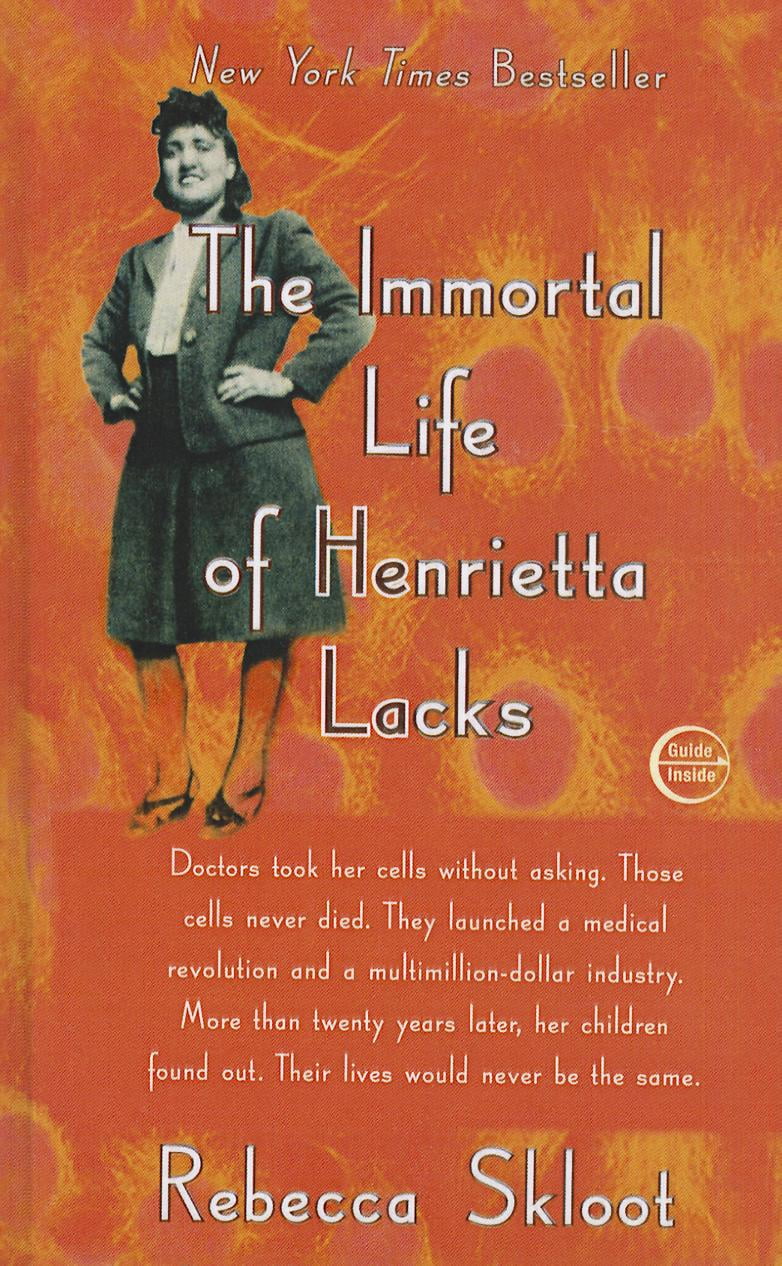
The same is likely true of at lest on other study called "The Use of Deep Temporal Leads in the Study of Psychomotor Epilepsy," which involved inserting metal probes into patients' brains. Bases on the number of patients listed in the pneumoencephalography studyand the years it was conducted, Lurz told me later, it most likely involved every epileptic child in the hospital including Elsie. Writer and journalist Rebecca Skloot spent ten years exploring a link between medicine, sociology, and ethics when she traced a connection between medically. "There is no evidence that the scientists who did research on patients at Crownsville got consent from either the patients of their parents. Because pneumoencephalography could cause permanent brain damage and paralysis, it was abandoned in the 1970s. Aided by writer Rebecca Skloot, Deborah Lacks. the side effects-crippling headaches, dizziness, seizures, vomiting-lasted until the body naturally refilled the skull with spinal fluid, which usually took two to three months. In 1951, cancerous cells from Henrietta Lacks lead to breakthroughs that change the face of medicine forever. Pneumoencephalography involved drilling holes into the skulls of research subjects, draining the fluid surrounding their brains, and pumping air or helium into the skull in place of the fluid to allow crisp X-rays of the brain through the skull.


That fluid protects the brain from damage, but makes it very difficult to X-ray, since images taken through fluid are cloudy. Skloot is currently working on a new book about the human-animal bond.“I later learned that while Elsie was at Crownsville, scientists often conducted research on patients there without consent, including one study titled "Pneumoencephalographic and skull X-ray studies in 100 epileptics." Pneumoencephalography was a technique developed in 1919 for taking images of the brain, which floats in a sea of liquid. When Henrietta Lacks entered the hospital for treatment, she signed a form. She served as co-editor of The Best American Science Writing 2011 and has worked as a correspondent for NPR’s Radiolab and PBS’s Nova ScienceNOW. Reader with a Cause Discussion Questions for. Learn vocabulary, terms, and more with flashcards, games, and other study tools. Her work has been anthologized in several collections, including Best Food Writing and Best Creative Nonfiction. Start studying PART 1 QUIZ REVIEW: The Immortal Life of Henrietta Lacks. The LA Times book review section named Skloot one of its four Faces to Watch in 2010, an honor that, based on The Immortal Life of Henrietta Lacks is. She has written more than 200 feature articles, personal essays, book reviews, and news stories. Rebecca Skloot, who lives in Chicago, has a BS in biological sciences and a MFA in creative nonfiction. A biography unlike any other, The Immortal Life of Henrietta Lacks tells the story of a woman who made a contribution to science that still reverberates to. More than 250 communities, schools, and universities have chosen The Immortal Life for their common read programs. It has enjoyed more than four years on The New York Times bestseller list, was listed on of Amazon’s 100 Books to Read in a Lifetime, and has been translated into more than 25 languages. It was the 2011 winner of the National Academies.

The Immortal Life was selected as a best book of 2010 by over 60 media outlets including The New York Times, Entertainment Weekly, The American Library Association, People, The Washington Post Book World, O, The Oprah Magazine, and The Boston Globe. The Immortal Life of Henrietta Lacks (2010) is a non-fiction book by American author Rebecca Skloot. Part detective story, part scientific odyssey, and part family saga, The Immortal Life raises fascinating questions about race, class, and bioethics in America. Her effort produced The Immortal Life of Henrietta Lacks, which has sold more than 2.5 million copies to date, and was recently made into an HBO film produced by Oprah Winfrey and Alan Ball. Writer and journalist Rebecca Skloot spent ten years exploring a link between medicine, sociology, and ethics when she traced a connection between medically important cancer cells and their overlooked origin in a poor black tobacco farmer.


 0 kommentar(er)
0 kommentar(er)
